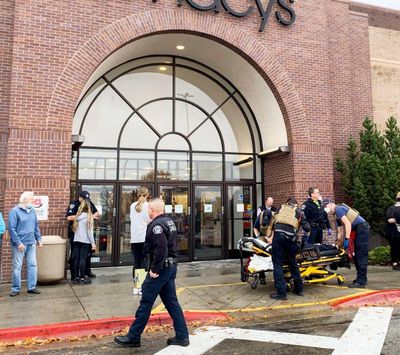New study shows an increase in gun homicides, suicides in first year of COVID-19 for Idaho

Throughout the COVID-19 pandemic, the focus on COVID-related deaths has naturally been one of the most heavily covered statistics in the United States.
But a new report from the Centers for Disease Control and Prevention has spotlighted another facet of life impacted by the pandemic: firearm-related homicides and suicides.
In fact, the report shows that the firearm-related homicide rate in the U.S. reached its highest level in over 25 years in 2020, a 34.6% increase from 2019 to 2020.
There were 14,392 firearm homicide incidents in 2019 and 19,350 in 2020, raising the firearm homicide rate from 4.6 to 6.1 per 100,000 people in the U.S.
“The increases were pervasive. Firearm homicide rates increased across the country, in both metropolitan and rural areas,” said Dr. Tom Simon, associate director for science in the division of violence prevention, in a CDC briefing on Tuesday. “We saw increases for males and females and across all age groups.”
Idaho’s firearm rate increases
Using the CDC’s interactive database WISQARS, Idaho recorded 18 firearm homicides in 2019. That number increased to 26 in 2020.
Although Idaho saw a slight increase in firearm homicide rate, the most significant change came in firearm suicide rates. The state saw a rise from 233 to 277 suicides involving a gun between 2019 and 2020, according to WISQARS, with 87.7% of those suicides being male.
According to the American Foundation for Suicide Prevention, middle-aged white men have the highest rate of suicide in the U.S., with men 3.9 times more likely to die by suicide than women.
The CDC notes that experts say they can only speculate on whether there has been a COVID-related increase in homicides and suicides, though. There is correlation, but it’s not clear if there is causation.
“The (CDC) study was not able to examine the reasons for the increasing rates, and multiple explanations have been proposed in the literature,” Simon said. “One possible explanation is stressors associated with the COVID-19 pandemic that could have played a role.
“These include changes and disruptions to services and education, social isolation, economic stressors such as job loss, housing instability and difficulty covering daily expenses.”
Combining homicides and suicides, Idaho ranked 16th in the nation for firearm death rate in 2020, the most recent data provided by the CDC. Although the state only saw 321 deaths from firearms in the U.S. (36th), the death rate was 17.6 per 100,000 people.
That’s an increase of 66 firearm-related deaths from 2019, when Idaho ranked 18th in the nation with 14.2 homicides per 100,000 people.
Mississippi ranked as the highest state in the U.S. in 2020 for gun-related death rate, and Hawaii ranked the lowest.
The CDC defines a firearm-related death as a murder, suicide and unintentional death, law enforcement involved shooting, and undetermined circumstances while using a gun.
What’s being done to help?
The CDC is currently funding several research projects to help identify potential gun violence and offer interventions. One method is through outreach workers who identify and mediate potentially lethal conflicts in communities and then follow up later to ensure that the conflict does not escalate.
The CDC has also worked with the White Mountain Apache Tribe suicide prevention task force, which involved counseling, education and providing lock boxes and other safety devices to prevent homicides and suicides in the community. In part to the program, suicide death rates among the White Mountain Apache in Arizona dropped from 40 to 24.7 per 100,000 people.
“These approaches can help lift individuals and families out of poverty, reduce stress, and enhance positive outcomes,” Dr. Deborah Houry, CDC acting principal deputy director, said in Tuesday’s briefing. “These approaches can complement the work of law enforcement to help make their jobs easier and to make communities safer.”
There are several options for Idahoans who need help.
The National Suicide Prevention Line is available 24 hours by calling (800) 273-8255. The Idaho Crisis and Suicide Hotline can also be reached by calling or texting (208) 398-4357.